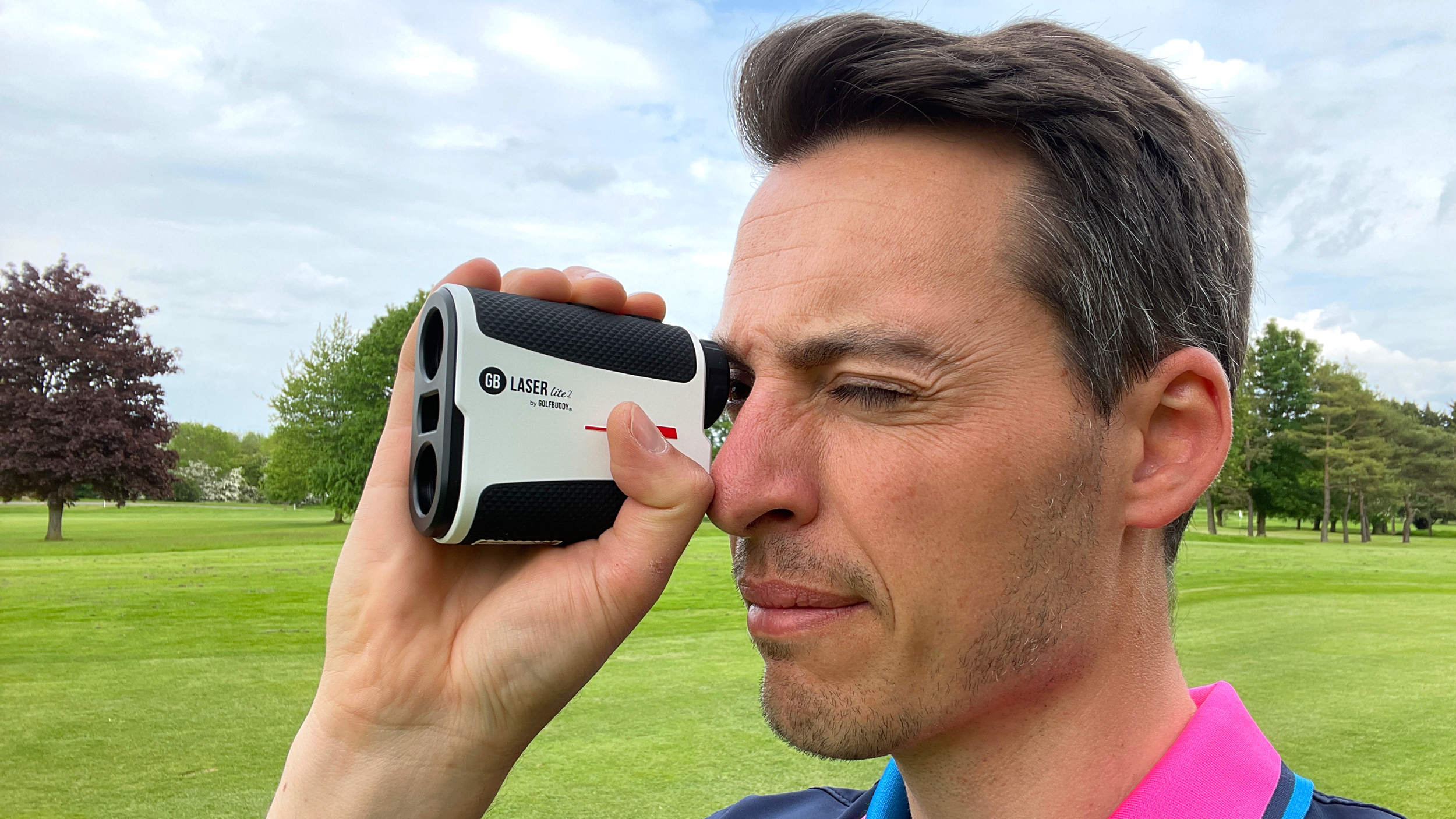GolfBuddy Laser Lite 2 Rangefinder Review
Laser expert Joel Tadman takes the Laser Lite 2 rangefinder from GolfBuddy for a spin over multiple rounds

The refinements over the previous Laser Lite model are minor but certainly make the task of shooting pins accurately a little easier. Given the features and ease of use and this price point, the value for money on offer here is exceptional.
-
+
Quick to display distances
-
+
Slope enabled
-
+
Scan mode useful off the tee
-
+
Excellent value for money
-
-
Turning slope on/off is time consuming
-
-
Lightweight design limits stability
Why you can trust Golf Monthly

GolfBuddy Laser Lite 2 Rangefinder Review
The original Laser Lite was arguably the leading choice among the best budget golf rangefinders given the features and accuracy on offer. Its replacement, the Laser Lite 2, claims to offer an even better experience for golfers seeking the performance of a premium rangefinder without the punchy price tag.
Watch: Joel Tadman details why the GolfBuddy Laser Lite 2 was included in Golf Monthly's Editor's Choice for 2024.

That said, the Laser Lite 2 (£169.99) is a little more expensive than the Laser Lite (£129.99), so what’s changed? For starters, it’s three grams lighter, which means it
accentuates that lightweight feel many golfers like, although for me it did hinder stability when shooting flags in the wind. You get a longer range too - up from 800 yards to 880 yards, although I’ve never had to shoot anything close to this distance, so this 'upgrade' seems somewhat redundant.
The Laser Lite 2 is also thinner and a little more compact, which I definitely noticed and appreciated because the Laser Lite was quite wide and boxy in shape. There’s now a textured area on the bottom as well as the top, which should help you keep a firm grasp of the device when in use. It’s also a little faster when shooting the flag, only marginally but these fractions of a second count when going up against the best golf rangefinders. In fact, I tested it head to head against the new Bushnell Tour V6 Shift rangefinder, admittedly a premium model but the Laser Lite 2 stacked up well. The display on the GolfBuddy isn’t quite as bright or vivid, but it shot the pin just as easily and produces a reassuring vibration when it has been picked out.

In terms of accuracy, the Laser Lite 2 produced similar numbers to the Bushnell. The non slope numbers were pretty much identical and when going uphill the numbers compared closely, it was only on shots that played downhill where the differences got bigger - the Laser Lite 2 saying shots played much longer downhill than the Bushnell. In terms of activating the Slope, you continue to have to hold down the mode button for 5 seconds, which is a slower process than on most of the best golf rangefinders with slope, but it ensure the design of the Laser Lite 2 is clean and simple.
Other features include a Scan mode, where you hold down the main button and scan the surroundings - the distance changing as you do so, which is very useful when assessing what lies ahead off the tee. There’s also a new Pin Finder mode, which is automatically employed when you press and hold the measurement button when not in Scan mode. This will ensure the shortest distance is displayed with the ‘Pin’ graphic popping up in the viewfinder to show you it has been utilised. There's also a graphic that shows the battery level.
Subscribe to the Golf Monthly newsletter to stay up to date with all the latest tour news, equipment news, reviews, head-to-heads and buyer’s guides from our team of experienced experts.

One final change is to the carry case, which has transitioned into a more open design with a Velcro strap that connects over the top. I like this change, it made the Laser Lite 2 easier to access and rehouse when in a hurry to play my upcoming shot although it doesn't offer quite as much protection from the rain. That said, it is IPX4 water resistant, which should keep light showers at bay. For anything heavier, you may need to re-home it in your waterproof golf bag pocket.

Joel has worked in the golf industry for over 15 years covering both instruction and more recently equipment. He now oversees all equipment and video content at Golf Monthly, managing a team of talented and passionate writers and presenters in delivering the most thorough and accurate reviews, buying advice, comparisons and deals to help the reader or viewer find exactly what they are looking for.
One of his career highlights came when covering the 2012 Masters he got to play the sacred Augusta National course on the Monday after the tournament concluded, shooting a respectable 86 with just one par and four birdies. To date, his best ever round of golf is a 5-under 67 back in 2011. He currently plays his golf at Burghley Park Golf Club in Stamford, Lincs, with a handicap index of 3.1.
Joel's current What's In The Bag?
Driver: Titleist GT3, 9°, Fujikura Ventus Black 6 S shaft.
Fairway wood: Titleist TSR3, 15°
Hybrid: Titleist TSi2, 18°
Irons: Titleist T150, 4-PW
Wedges: Titleist Vokey SM10, 50°, 54° and 58°
Putter: LAB Golf DF3
Ball: 2025 Titleist Pro V1x